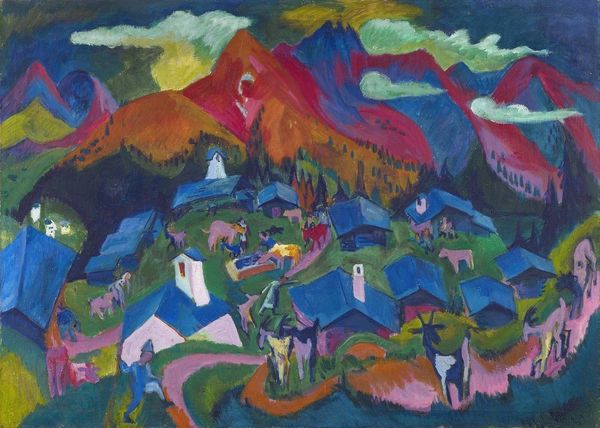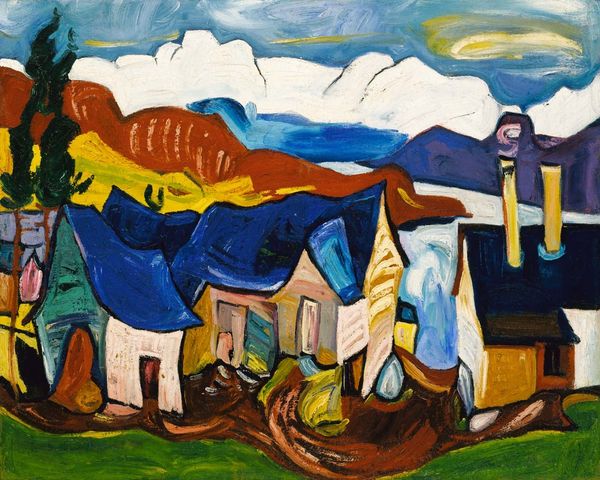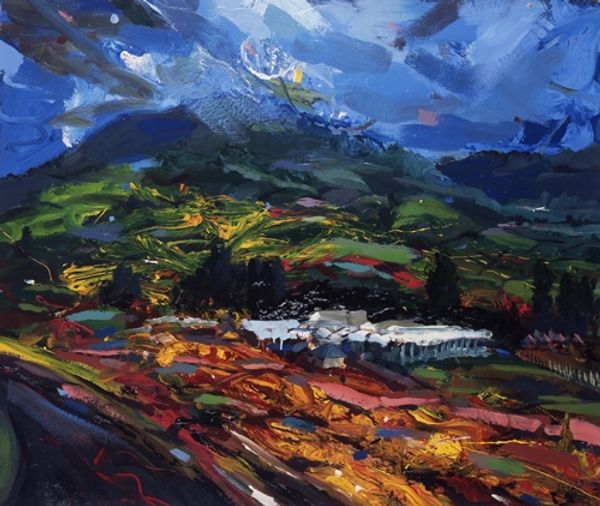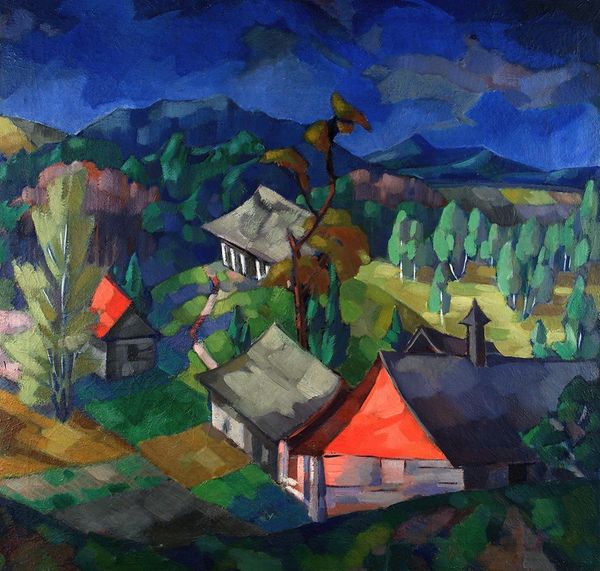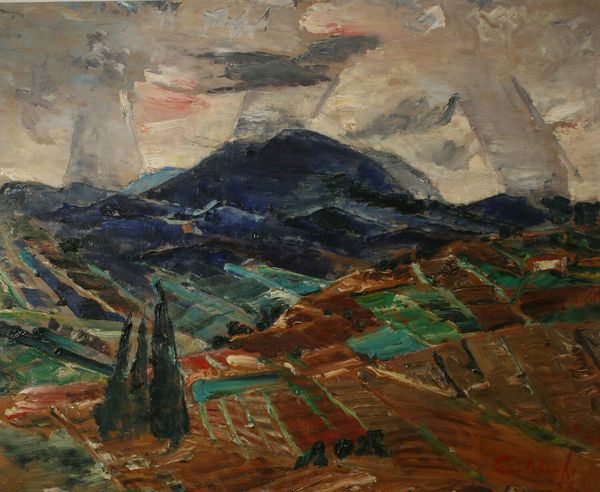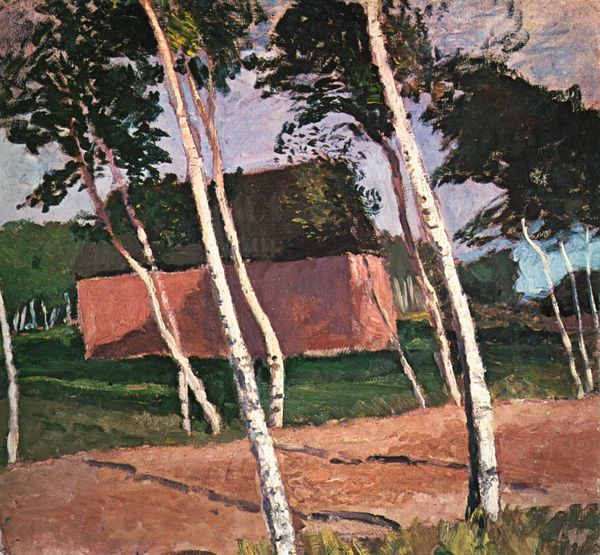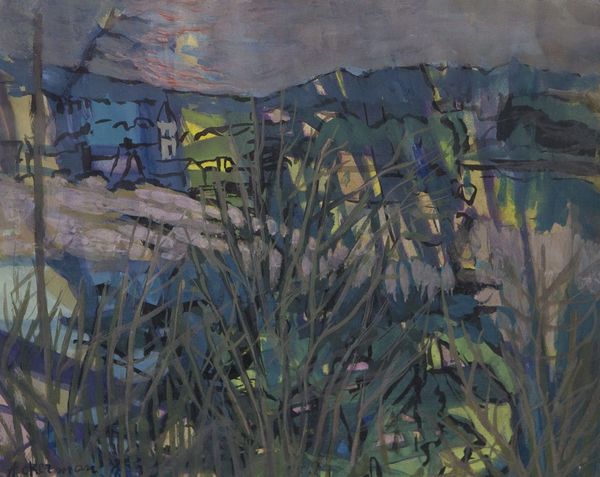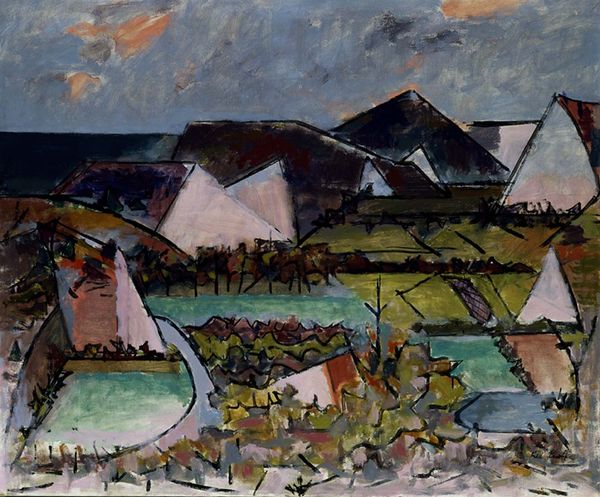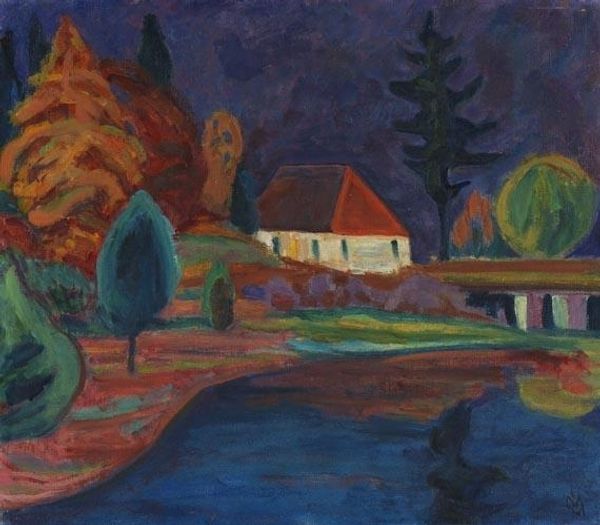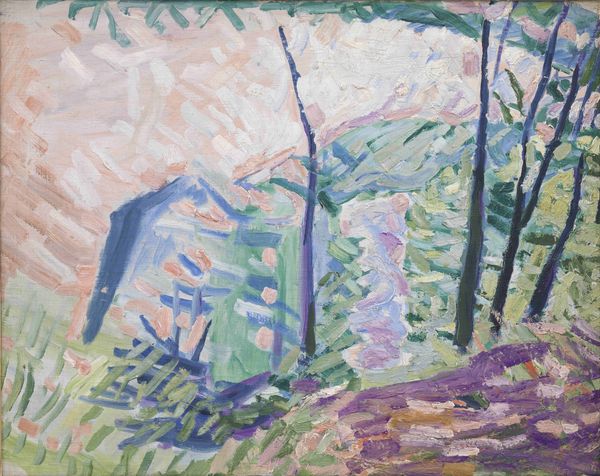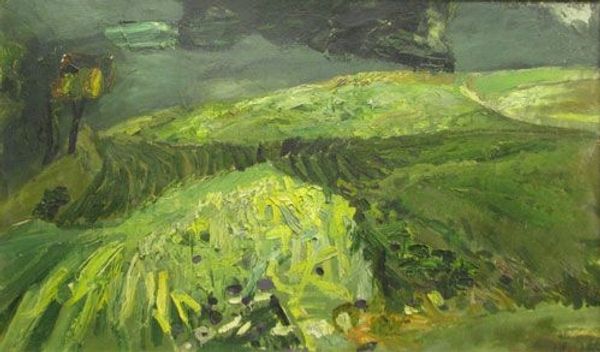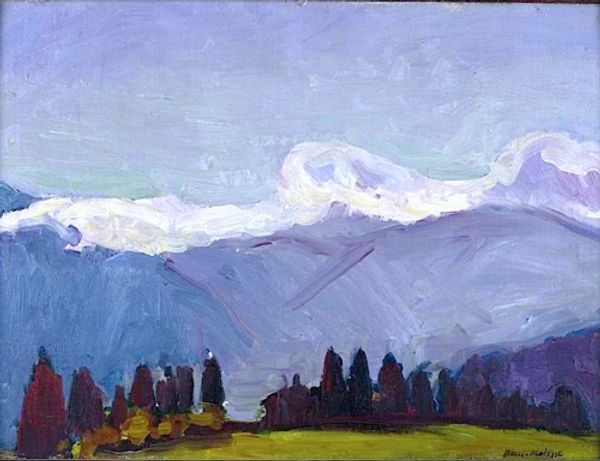
Copyright: Public domain
Editor: Here we have Emily Carr’s "Odds and Ends," painted in 1939, using oil on wood. There’s a real tension between the remaining tall trees and all the stumps, making the landscape feel almost melancholic. What's your take on this piece? Curator: I see Carr directly engaging with the exploitation of natural resources. The stumps are the remnants of industry and they are presented as a challenge to the romanticism inherent in traditional landscape painting. She uses oil, a material readily available and heavily commodified. Editor: That makes me think about the title "Odds and Ends"—the discarded remains of the logging industry. Do you think she is criticizing it directly? Curator: I don’t know if it’s so much direct criticism as it is a commentary on consumption and its consequences. The heavy brushstrokes, almost aggressively applied, emphasize the labor involved, and the very material reality of transforming the forest into a commodity. It reminds us that "nature" itself is also a constructed material within our economic system. Look how the mountain's reduced to backdrop! What does that say to you? Editor: It does feel like the mountain's significance is reduced, doesn't it? The focus seems more on what humanity *did* to this space. Thanks. Curator: Absolutely. Examining the materials, labor, and the impact of industry provides a fresh reading to a seemingly straightforward landscape. We both learned to view with new eyes the materiality of destruction that haunts Carr’s representation. Editor: Agreed. Looking through this materialistic lens definitely adds layers to my understanding and prompts crucial questioning of human activities' marks on this landscape.
Comments
No comments
Be the first to comment and join the conversation on the ultimate creative platform.
